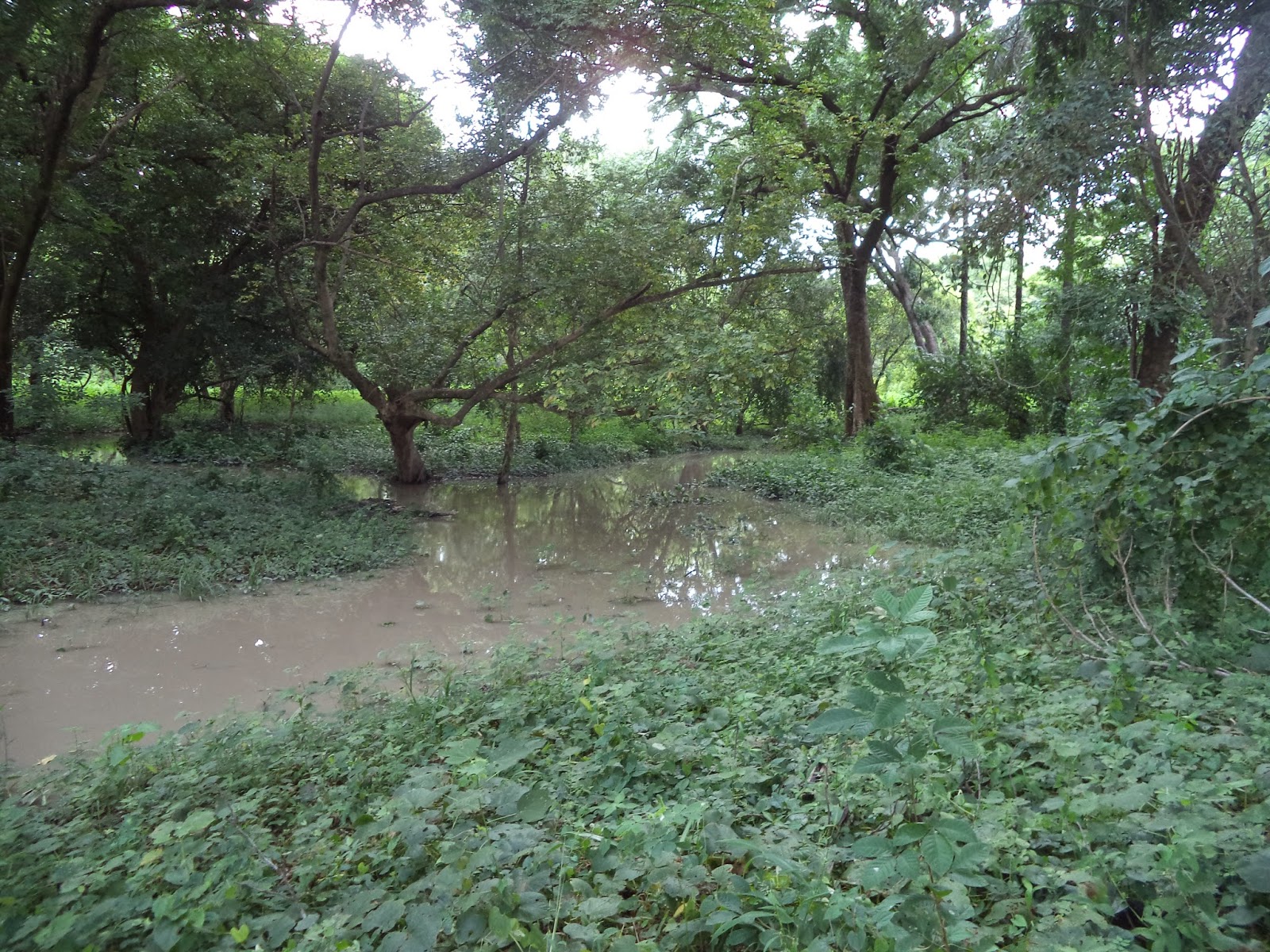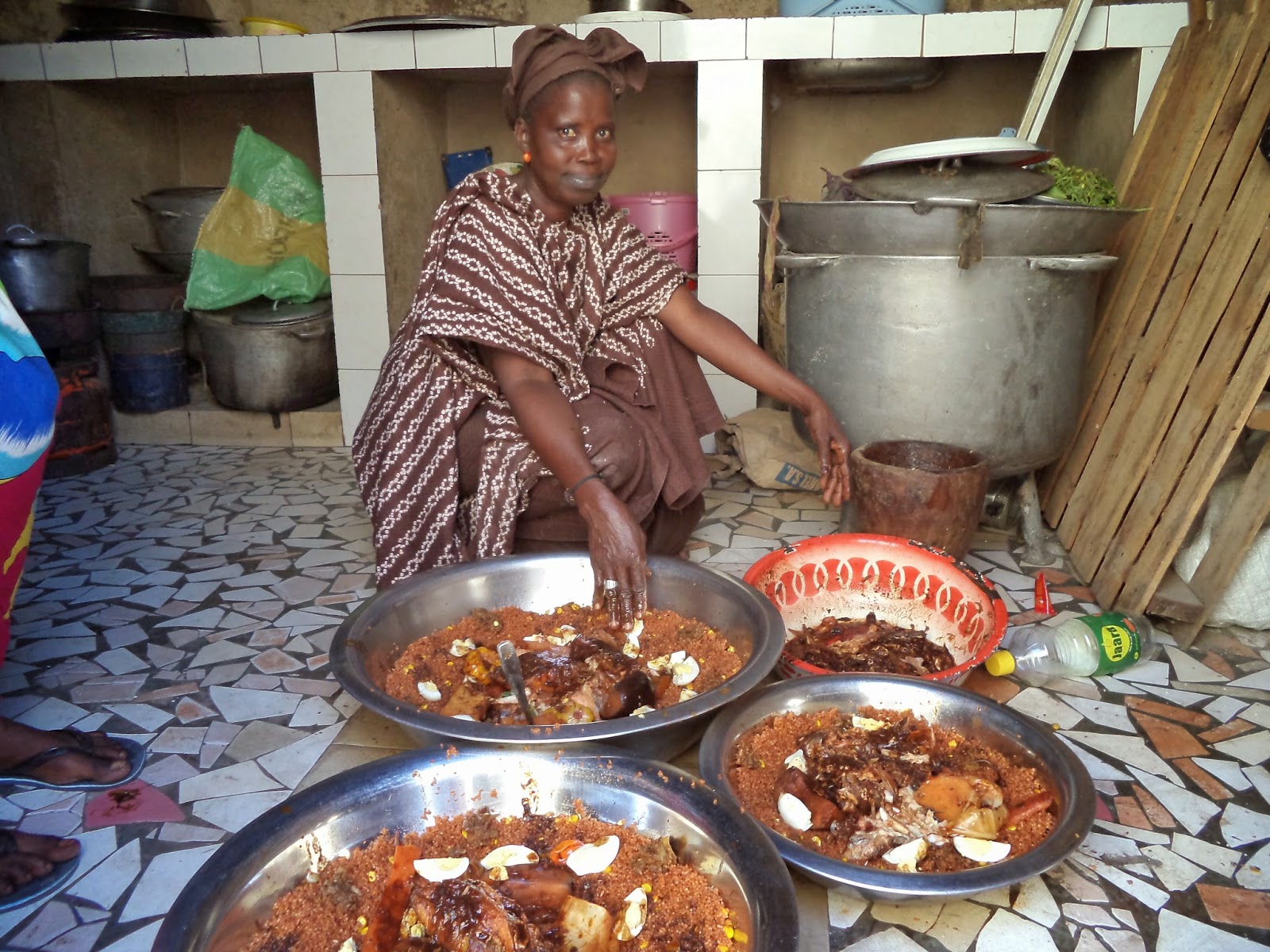The travel in turned out to be a fun(haha sarcasm to the extreme) adventure as well. The hour I waited at the road brought me no success of a random car heading in the direction I wanted. So I had to pay 1,000cfa (2 dollars) to travel 20km in the wrong direction to get to the nearest garage. At the garage I paid an additional 2,500cfa(5 dollars) to travel 80km back the way I’d come. Although this car wasn’t full and I had to wait for two hours, while still being fevery and generally unwell. Although I did meet a nice family who let me use their outdoor duce while I waited. Our 3 hour trip into the city was held up on two occasions. Once because a truck driver decided the middle of a one lane road with zero place to driver around him was the best place to stop. A second time because someone needed to borrow a tire iron. I’m not entirely sure because I was focusing on not overheating and dying in the back of the car when it stopped and consequently stopped the airflow. Made it into the city at 5:30 p.m., a nice six and a half our endeavor which should have taken under 4.
Anyway I arrived in the city to a fun power outage and found my fever to be on the rise. By the time I called our medical team I was near 103 degrees Fahrenheit. I took also the malaria rapid test to ensure that a fun bout of malaria wasn’t the cause of my discomfort. Negative. So med suspected strep throat and prescribed an antibiotic and pain killers to reduce fever. I’ve since spent some unpleasant days coughing and being out of energy. Although honestly I would easily have gone twice as long with all that if I could have given up an insufferable canker-sore at the end of my right canine tooth. I couldn’t move or eat or drink without the tooth digging into the sore and just driving me mad. Six days of both of these things and I’m feeling energetic again.
Now
for the reason I wanted to write, some successful projects I’ve done. The first
project I did about four months ago. Went around my village helping people plant
Moringa seeds in 2 ft. spaced patterns. Moringa is a rapidly growing tree when
given enough water. It contains excellent quantities of protein, calcium,
vitamin c, and other hard to come-by nutritious goodies. The leaves are a
valued cooking additive and the tree itself is difficult to kill. Also you can
cut the tree and it will regrow. Even better you can use the cut portions and
plant them in the ground and those will grow. So if I can get just a few
started and teach people how to care for it then in a few years we can just
make its numbers around the village blow up.
As you can see a few short months and these trees are about 2m tall.
Kumba holding her little one. Kumba had also been growing corn here, so some of the nutrients and water that would have gone to the moringa were siphoned off. Yet the moringa will outlive the corn by a great many years we hope!
Two little jokesters that I pulled into my camera work with a few of the trees splattered about.
Another fantastic looking bed of moringa, sorry I didn't pull somebody in for scale.
As you can see a few short months and these trees are about 2m tall.
Kumba holding her little one. Kumba had also been growing corn here, so some of the nutrients and water that would have gone to the moringa were siphoned off. Yet the moringa will outlive the corn by a great many years we hope!
Two little jokesters that I pulled into my camera work with a few of the trees splattered about.
Another fantastic looking bed of moringa, sorry I didn't pull somebody in for scale.
Here are some younger girls at my work partners compound among the few moringa that lived thus far.
Another fun project I’ve been
working on is the Michelle Sylvester Scholarship. This project involved going
to a neighboring village’s school(the one in my village is the equivalent to an
elementary school) and helping teenage girls pay for inscription fees and
school supplies. First the school supplied us(a nearby volunteer helped me a
little) with a list of the top ten preforming girls, several from each
grade(they would be early high school equivalents I think). Each of the girls
wrote a short essay on a question of their choice, referencing the advancement
of women in society or the importance of education. Next I went to their
compounds and(with the help of a French/English/Pulaar speaking teacher) asked
them questions about their home life. Questions like; if they planned to
continue schooling in the event of marriage, or if their family had difficulty
paying for schooling, or what they aimed to be after school. Next all the
paperwork was gathered up and sent out. A few weeks back I received the twenty
dollars for each girl. Ten went to inscription fees and ten I was instructed to
use on purchasing school supplies; backpacks, pens, pencils, notebooks, and a
math kit for each of the scholarship recipients. Here is a fuzzy picture of us
(Sorry mom but my camera has a grain of sand in the focus and is hard to work,
meaning that I’m the only one who can work it, which is why there are no GOOD
pictures of me.)

This project revealed some of the sadder elements to the culture here as well. When asking the girls what they wanted to be when they finished school the answer was almost always doctor, police officer, or teacher. This might not be a bad thing to aim for, but they are practically the only professions available. When you talk to young women the answers given are obviously(most of the time) only what they believe you want to hear. In multiple young people empowerment gatherings I've been to a strong willed successful woman will ask the younger girls what occupation they desire. Many of these are answered with silence until a frew options are given as a prompt, and then the one heard most recently is spouted off as the asnwer because it is perceived as the correct answer. Now this saddens me on two fronts. Firstly because the way educatoin is handled here(and to some extent Stateside) is to elicite fact regurgitation and ignore critical thinking. Classes here consist mostly of the teacher saying something and then every child in the class yelling it out loud repeatedly.(to be covered in next post hopefully). Secondly I'm upset by this because not everyone needs to be a doctor or teacher. Nothing at all wrong with an ambition to be a parent or farmer. If everybody is a teacher or a doctor then where will all the shop keepers, mechanics, and farmers be? The point of the question is what do you want to do to make you happy, but the true meaning is sidelined not only in Senegal but often in the U.S. as well.
I’ve also been working on getting people started on seedlings of a couple types of fruit trees. To occupy my dry season time and before the big workhorse seeds of mango and cashew are ripe, I’ve been working guava, citrus, and papaya. I walk around telling people that these seeds will be ripe very shortly and if anyone wants one or two or twenty of these trees let me know and I’ll help them start and care for everything until they are adults. So people ask for one or two guava trees or papaya trees and then I give them tree sacks to fill and get ready and then I’ll return to their compound with seeds when the seeds are ready later on. One of my practice runs of this project has already yielded… this tiny guava tree pepineer(French for tree nursery I think?) Also I do not own this or take care of it, purely Senegalese gorwing and learning happening right there.
I’ve also been working on getting people started on seedlings of a couple types of fruit trees. To occupy my dry season time and before the big workhorse seeds of mango and cashew are ripe, I’ve been working guava, citrus, and papaya. I walk around telling people that these seeds will be ripe very shortly and if anyone wants one or two or twenty of these trees let me know and I’ll help them start and care for everything until they are adults. So people ask for one or two guava trees or papaya trees and then I give them tree sacks to fill and get ready and then I’ll return to their compound with seeds when the seeds are ready later on. One of my practice runs of this project has already yielded… this tiny guava tree pepineer(French for tree nursery I think?) Also I do not own this or take care of it, purely Senegalese gorwing and learning happening right there.
Now how about some other little pictures of stuff and then goodnight.
This youngster was out collecting bissap flowers. They are heated in a little water and a good deal of sugar and the red and flavor leak out making a colorful and tasty beverage. Also corn season being in the swing you'll notice a few discarded husks and cobs.
The youngster on the left is one of my work partners kids and his wife Mariama is in the background picking bitter tomato(look it up). The bitter tomato leaves have wood ash on them to keep away insects and I don't know if my village was doing this prior to my arrival or not. I had showed one of the prominent male gardeners and women from all over the village love to go to his well and get water because the longer walk gives them a little break but also becuase it's shallow and they have a chance socialize. While being next to the garden they may have asked him about his use of wood ash to protect plants. I don't know if what I did there spread or if people already knew this though?
Lastly I love clouds and boabobs. Scenes like this will be one of the things I'll miss the most when I'm flying back home for good just under ONE YEAR FROM NOW! Have a good day everybody.




















































